
Lobivia cinnabarina is a species of cactus first described in 1885.

Armatocereus cartwrightianus is a species of Armatocereus from Ecuador and Peru.
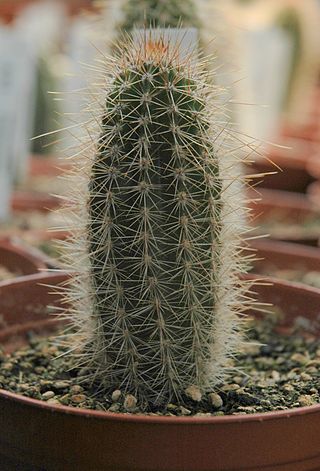
Armatocereus godingianus is a species of Armatocereus from Ecuador and Peru.

Acanthocalycium thionanthum is a species of Acanthocalycium from Argentina.

Echinopsis densispina, is a species of Echinopsis found in Argentina.
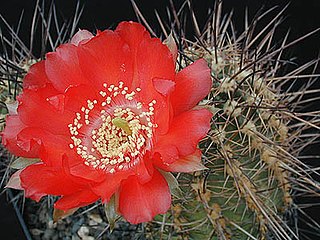
Echinopsis haematantha, is a species of Echinopsis found in Argentina and Bolivia.

Lobivia ferox, is a species of Lobivia found in Bolivia and Argentina.

Lobivia obrepanda, is a species of Lobivia found in Bolivia.

Soehrensia huascha, is a species of Soehrensia in the Cactaceae family, found in north western Argentina. First published in Cactaceae Syst. Init. 29: 5 in 2013.

Lobivia pentlandii, is a species of Lobivia found in Bolivia and Peru.
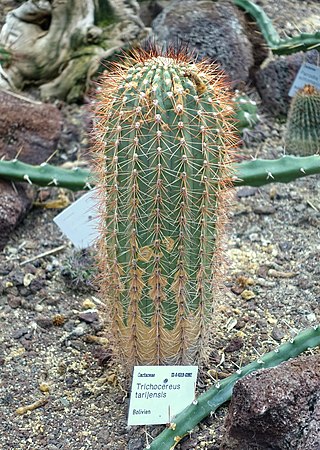
Soehrensia tarijensis, is a species of Soehrensia, in the cactus family. It is native to Bolivia and northwestern Argentina.

Lobivia schieliana, is a species of Lobivia found in Bolivia and Peru.

Lobivia pampana is a species of Lobivia found in Peru.

Lobivia tiegeliana, is a species of Lobivia found in Argentina and Bolivia.

Echinopsis chrysantha, is a species of Echinopsis found in Argentina.
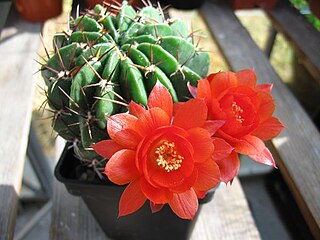
Lobivia maximiliana, is a species of Lobivia found in Bolivia and Peru.
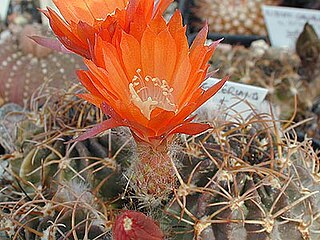
Lobivia tegeleriana is a species of Lobivia found in Peru.

Cephalocereus euphorbioides is a species of Cephalocereus from Mexico.

Borzicactus sepium is a species of Borzicactus found in Ecuador.
Lobivia pugionacantha, is a species of Lobivia found in Argentina and Bolivia. Lobivia is a genus of cacti.




















